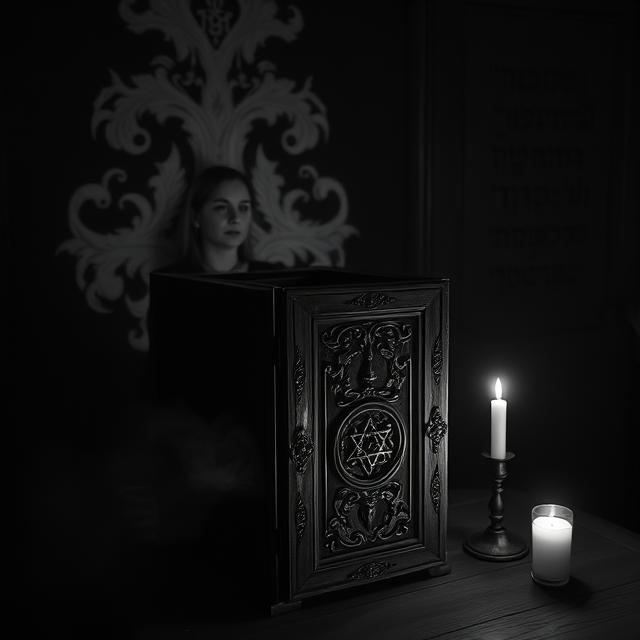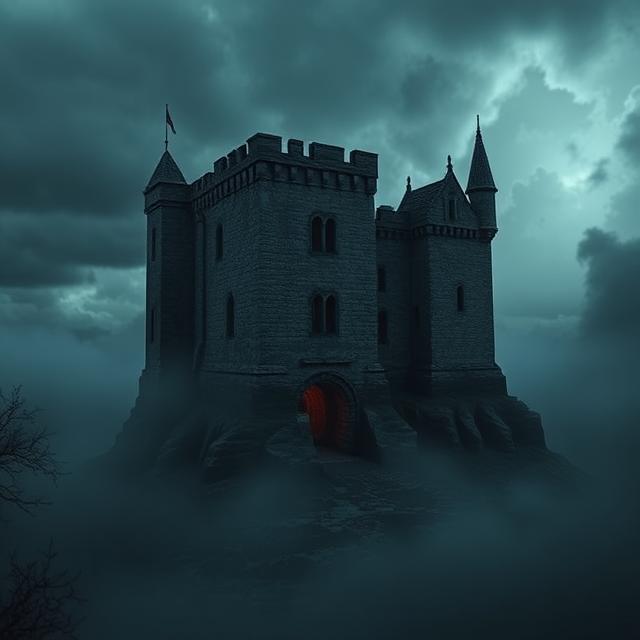The Dybbuk Box. The name itself carries an air of unease, a whisper of the occult that has captivated the internet and the paranormal community for years. Described as a simple, antique wine cabinet, the box is said to be haunted by a malicious spirit – a dybbuk in Jewish folklore – that has brought misfortune, illness, and even madness to those who have owned it. The story of the Dybbuk Box, originating from a purported estate sale in Poland and traveling across continents through a series of increasingly disturbed owners, is a compelling narrative that blurs the line between genuine paranormal activity, elaborate storytelling, and the potent influence of belief. Let us open the door to the legend of the Dybbuk Box and explore the haunting it allegedly unleashed upon the world.
The most widely circulated account of the Dybbuk Box begins in 2001 with Kevin Mannis, an antique furniture dealer in Oregon. Mannis claimed to have purchased the wine cabinet at an estate sale of a 103-year-old Polish Holocaust survivor named Havaleh. Havaleh’s granddaughter reportedly told Mannis that the box had been in her grandmother’s possession since she fled Nazi-occupied Poland and that it was never to be opened, as it contained a dybbuk.
Intrigued and perhaps disregarding the warning, Mannis opened the box. Inside, he claimed to have found several items, including two 1920s pennies, a lock of blonde hair wrapped with twine, a small goblet, a dried flower, and a small stone tablet with the Hebrew word “Shalom” engraved on it. Soon after opening the box, Mannis and those around him began to experience a series of unsettling events. He reported nightmares of an old hag, the smell of cat urine, unexplained illnesses, and technical malfunctions. Others who came into contact with the box also claimed to experience negative effects.
Mannis eventually listed the box for sale on eBay, recounting his experiences in a detailed and increasingly dramatic description. It was purchased by Iosif Nietzke, a seminary student in Missouri, who also reported negative experiences, including nightmares and the feeling of a malevolent presence. Nietzke owned the box briefly before selling it to Jason Haxton, a museum curator in Kirksville, Missouri.
Haxton’s ownership of the Dybbuk Box is perhaps the most extensively documented and sensationalized. He claimed to have suffered a range of severe health issues, including hives, coughing up blood, and strange growths on his skin, all of which he attributed to the box. Haxton also claimed that his family experienced nightmares and that the box emanated a foul odor and made strange noises.
Driven by his experiences, Haxton researched the folklore of dybbuks and the alleged history of the box. He claimed to have learned that Havaleh had attempted to seal the dybbuk inside the box after it had possessed a friend. According to Haxton, the rituals to properly seal a dybbuk were never completed.
Haxton took extreme measures to contain the alleged spirit, including encasing the box in epoxy resin and storing it within a military ammunition box. He eventually donated the Dybbuk Box to Zak Bagans, a paranormal investigator and host of the television show “Ghost Adventures,” for display in his Haunted Museum in Las Vegas.
The Dybbuk Box has become a popular and often sensationalized artifact in the paranormal world. Stories surrounding it have been featured in numerous television shows, documentaries, and online forums, further amplifying its legend. The narrative often emphasizes the consistent negative experiences reported by its owners and the alleged malevolent energy emanating from it.
However, skeptical perspectives offer alternative explanations for the phenomena associated with the Dybbuk Box. The power of suggestion and the nocebo effect (where negative expectations lead to negative outcomes) are often cited. Knowing the box’s reputation for being haunted and the dramatic stories surrounding it could predispose individuals to interpret mundane events as paranormal or to experience psychosomatic symptoms.
The detailed and often theatrical accounts of the box’s owners, particularly in the context of seeking attention or engaging in storytelling, also raise questions about the reliability of the narratives. The lack of verifiable historical evidence for the box’s origins and the alleged dybbuk it contains further fuels skepticism.
Jewish folklore describes a dybbuk as a malicious possessing spirit, typically the dislocated soul of a dead person that, due to some sin or unfinished business, cannot move on to the afterlife and instead clings to the living. While the concept of dybbuks is a genuine part of Jewish tradition, the idea of trapping one in a box is less common in traditional folklore.
The story of the Dybbuk Box, while captivating, relies heavily on anecdotal evidence and personal testimonies, many of which have been shared publicly and have likely been influenced by the existing legend. The lack of independent verification or scientific investigation into the alleged paranormal activity makes it difficult to definitively determine the nature of the phenomena reported.
Ultimately, the Dybbuk Box remains an intriguing enigma. Whether it is a genuine vessel for a malevolent spirit, a compelling example of the power of belief and suggestion, or a combination of both, its story continues to fascinate and unsettle. The whispering cabinet, with its purported history of tragedy and paranormal activity, stands as a potent symbol of our enduring fascination with the unseen and the potential for darkness to reside within the most ordinary of objects.
Want to explore the shadows even deeper? For more chilling cases like this, visit SinisterArchive.com, where the legends are real.




